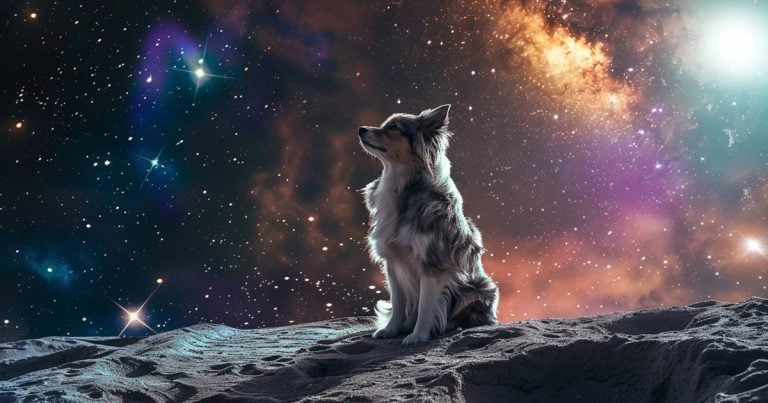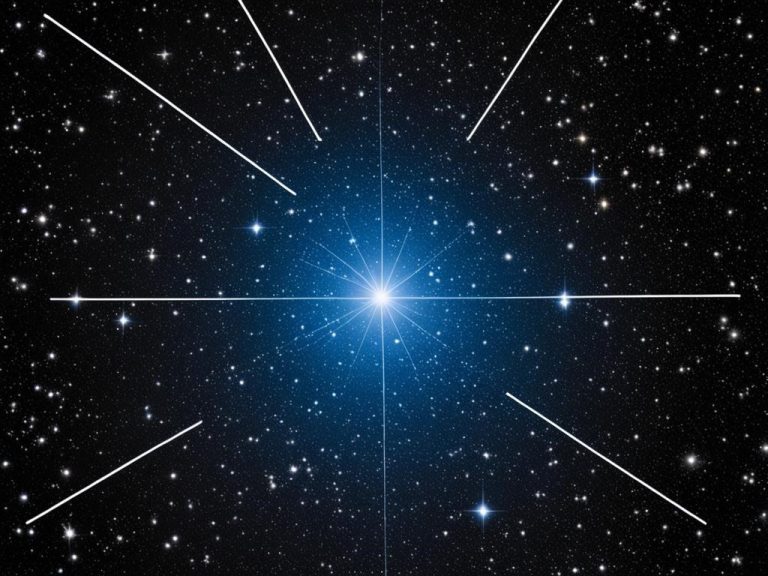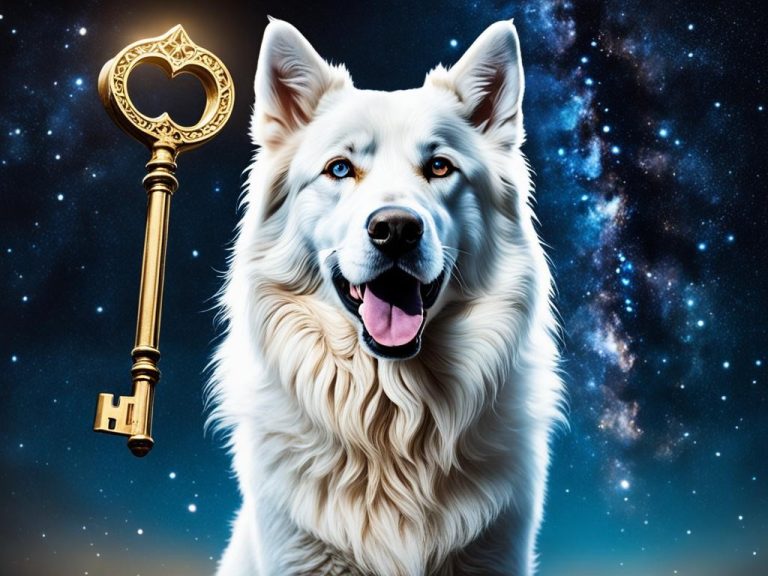Explore the Canis Minor Constellation | Star Guide
Modified: April 30, 2024 Author: International Star Registry
The Canis Minor constellation, or Lesser Dog, is the 71st largest among the 88. It covers 183 square degrees. You can spot this tiny constellation in the northern sky from December to April. Its stars are visible between 90 and -75 degrees latitude.
Astronomers and lovers of the night sky have found the Canis Minor constellation intriguing for centuries. It was first seen by Greek astronomer Ptolemy in the second century. The constellation shows the smaller dog that follows Orion, the famous Hunter. It is next to Monoceros, Gemini, Cancer, and Hydra.
The main star in Canis Minor is Procyon. It shines as the 8th brightest in the night sky with a magnitude of 0.38. Procyon is actually two stars, about 11.4 light years away from us. Gomeisa, the second brightest, is a blue subgiant star. It is around 170 light years from Earth.
Canis Minor doesn’t have Messier objects, but it does have some interesting deep-sky sights. For example, there’s a spiral galaxy named NGC 2485 and a planetary nebula known as Abell 24. NGC 2485 is quite far, about 200 million light-years, and has a magnitude of 12.4. Abell 24 is a unique planetary nebula.

Key Takeaways:
- The Canis Minor constellation covers an area of 183 square degrees, ranking 71st in size among all constellations.
- Procyon, the brightest star in Canis Minor, is the 8th brightest star in the night sky and located approximately 11.4 light years away.
- Gomeisa is the second brightest star in Canis Minor and classified as a blue subgiant star, located around 170 light years from Earth.
- Canis Minor contains no Messier objects but features faint deep-sky objects like NGC 2485, a spiral galaxy, and the planetary nebula Abell 24.
- The constellation is best observed from January to March and is not part of the Zodiac group of constellations.
If you love learning about stars, Canis Minor is a great place to start. This constellation shows the beauty of the night sky. Visit Sea and Sky and Universe Guide to learn more.
Mythology and History of Canis Minor
The constellation Canis Minor has a rich history and mythology. In ancient Mesopotamia, it was seen as the twins, MASH.TAB.BA, around 1100 BC. This name means “twins”.
In Greek stories, Icarius the wine-maker and his dog Maere are connected to Canis Minor. Maere was loyal to Icarius, who was killed by his friends. As a tribute, the gods made his dog and the uncatchable Teumessian Fox constellations.
In Arabic astronomy, Canis Minor is shown as a dog on the back of Monoceros, the unicorn. It’s often seen as a minor companion to the greater dog, Canis Major.
This constellation has two main stars, Procyon and Gomeisa. Procyon is very bright, just 11.41 light-years from us. Gomeisa is the next brightest, about 170 light-years away.
The constellation also has faint deep-sky objects. The brightest is NGC 2485, a spiral galaxy near Procyon with a magnitude of 12.4.
If you’re interested in Canis Minor’s mythology, history, and stars, check out these resources:
The Brightest Star in Canis Minor
The Canis Minor Constellation has many important stars. But, the brightest one is Procyon. It has a visual magnitude of 0.38, making it the 8th brightest star at night. Procyon is part of a binary star system and is only 11.4 light years from Earth. This makes it quite close to us in space.
The name Procyon comes from Greek words that mean “before the dog.” It gets this name because it rises in the sky before the dog star, Sirius, in Canis Major.
Procyon is a great help for people who love looking at the stars. It’s very bright and easy to spot. This makes it a key star to find Canis Minor and other stars in the sky. Procyon is truly special as the brightest star in Canis Minor.
Procyon: A Closer Look
Looking closer, Procyon is in the F5 spectral class and is around 6,530 degrees Celsius. Its light comes from two stars, making it a beautiful sight to see.
Procyon is actually made up of two stars, Procyon A and Procyon B. Procyon A is the main star, while Procyon B is a white dwarf. Together, they create a unique view in the night sky.
When you start looking at the stars, don’t forget to look for Procyon. Its brightness and closeness make it stand out. It will surely catch your eye as you look up at the night sky.
Other Stars in Canis Minor
Canis Minor, not just Procyon, hosts other bright stars. Gomeisa is the beta star here. It’s the second brightest, with a blue shine. About 170 light-years away, it adds beauty to the night sky.
Gamma Canis Minoris is a unique pair of stars. Being 4.34 bright, it shines from 318 light-years away. This adds another layer to Canis Minor’s beauty.
Delta Canis Minoris has three stars in its system. They are Delta1, Delta2, and Delta3. Their lights reach from different distances, merging into one colorful masterpiece.
Far away at about 770 light-years is Epsilon Canis Minoris. Despite its distance, its shine is a key part of the constellation’s magical view.
Zeta Canis Minoris is a standout giant, far at 420 light-years. Its solo shine makes the constellation even more enticing.
Also worth noting are Eta Canis Minoris’ two stars. Seen 318 light-years away, they put on a dazzling show for us.
All these stars in Canis Minor make the night sky a beautiful sight. It’s why both astronomers and casual viewers admire this constellation.

- theplanets.org – Canis Minor Constellation information
- Wikipedia – List of Stars in Canis Minor
- universetoday.com – Canis Minor Information
Deep-Sky Objects in Canis Minor
The Canis Minor constellation has cool deep-sky objects to find. One is NGC 2485, a faint spiral galaxy. It has a brightness of 12.4 and needs a strong telescope to see. Abell 24, a sparkling planetary nebula, is also beautiful in the night sky.
It takes big telescopes to see NGC 2485 and Abell 24 clearly. But, finding them is a joy for those who love looking at stars. Exploring these objects needs curiosity and the right gear for a fun space adventure.
Characteristics of Canis Minor
Canis Minor is a small constellation that spans 183 square degrees. It’s close to the celestial equator and can be seen almost everywhere, except Antarctica. This group of stars shines best in the northern hemisphere from December to April.
The star pattern of Canis Minor is like a line. It’s drawn between its two brightest stars, Procyon and Gomeisa. Procyon is the top star here, known as a binary star system. It has a yellow-white star and a dim white dwarf. Gomeisa shines in blue-white light and is about seven light-years from us.
Canis Minor makes the night sky look even more beautiful. Its stars, like Procyon and Gomeisa, are part of a tapestry of constellations. People have loved looking at them for many centuries.
Canis Minor in Mythology
In Greek mythology, Canis Minor is part of stories about love, loyalty, and sadness. It tells the story of a dog named Maera and its owner, Icarius. Icarius was mistakenly killed by his friends, who thought he was poisoning them.
After Icarius died, Maera went looking for him. The dog found his body and took his daughter, Erigone, to it. This was a sad moment for them both.
Erigone and Maera were so sad they chose to die. Their tragic story touched the gods. So, they turned them into stars to honor their loyalty and love.
This tale shows us the power of loyalty and love through Canis Minor. It has been loved by many over the years. This makes it an important part of Canis Minor’s story.

Canis Minor Visibility and Hemisphere
Canis Minor is a top constellation in the night sky. You can see it in the northern hemisphere from December to April. It’s near the celestial equator. This means it’s beautiful to look at all around the world, except in Antarctica.
To see Canis Minor clearly, the best time is from January to March. Mid-February is the highlight. Its stars really shine during this period. So, it’s perfect for an amazing view of the night sky.
Are you into the stars or just love looking at the night sky? Missing the chance to see Canis Minor would be a huge loss. It’s truly stunning to behold.
This picture shows Canis Minor and its amazing stars. Its grandness makes the night sky even more interesting. A must-see for anyone who loves stars and space.
Canis Minor and Star Naming
Want a really special gift? Think about naming a star in Canis Minor. It’s perfect for birthdays, anniversaries, or big moments. International Star Registry lets you do this.
International Star Registry lets you give a star as a gift. You get to pick a star in Canis Minor or any other constellation. It’s a special way to honor someone you love.
Buying a star here gets you a cool certificate. It shows the star’s name, location in the sky, and a special number. It’s a special reminder of your love.
Naming a star is a sweet gesture for anyone special. It shows how much they mean to you. They’ll love knowing a star is named after them.
For a really heartwarming gift, get a star from Canis Minor. It shows your love. Check out International Star Registry for this unique present.
Conclusion
The Canis Minor constellation has a rich history and many cool features to see. It has bright stars like Procyon and Gomeisa, known for love and grief.
Want a special gift? Think about naming a star in Canis Minor. International Star Registry can help you do that. You’ll get a personalized certificate for special events or to honor someone. It shows the star’s name, the constellation, and its place in the sky.
Are you into stargazing or just curious about space? Canis Minor is a great place to start. Explore its myth, look at its stars, and learn why it’s important. This way, you’ll understand and love this small, but amazing, part of the sky.
Ready for an amazing adventure in the stars? Start with Canis Minor and see what you can find.
FAQ
What is the Canis Minor Constellation?
The Canis Minor Constellation is the Lesser Dog. It’s a small group of stars in the north sky. You can see it from December to April.
How big is the Canis Minor Constellation?
It’s about 183 square degrees. It’s next to Monoceros, Gemini, Cancer, and Hydra.
Who first cataloged the Canis Minor Constellation?
Ptolemy, a Greek astronomer, first wrote about it in the second century.
What does Canis Minor represent in mythology?
Canis Minor stands for Maere, Icarius’s dog. People thought Icarius’s friends killed him by mistake.
How is Canis Minor depicted on charts?
On star maps, you might see it as a small dog near the unicorn, Monoceros.
What is the brightest star in Canis Minor?
Procyon is the brightest. It shines at a visual magnitude of 0.38.
How far is Procyon from Earth?
Star is just 11.4 light years away from us.
What other notable stars are in Canis Minor?
After Procyon, Gomeisa is the next brightest. Also, there’s Gamma Canis Minoris and Epsilon Canis Minoris.
Are there any Messier objects in Canis Minor?
No, there are no Messier objects in Canis Minor.
Are there any deep-sky objects in Canis Minor?
Yes, there are a few. One is the galaxy NGC 2485. Another is the planetary nebula Abell 24.
When is Canis Minor visible in the night sky?
In the north, you can see it from December through April.
Can Canis Minor be seen from Antarctica?
Canis Minor is not visible from Antarctica.
Can I name a star in the Canis Minor Constellation?
Yes, you can name a star there. Use International Star Registry to do it for any constellation.
Source Links
- Constellation Canis Minor – The Constellations on Sea and Sky – http://www.seasky.org/constellations/constellation-canis-minor.html
- 6/26/2024 10:06:40 PM – https://www.universeguide.com/constellation/canisminor
